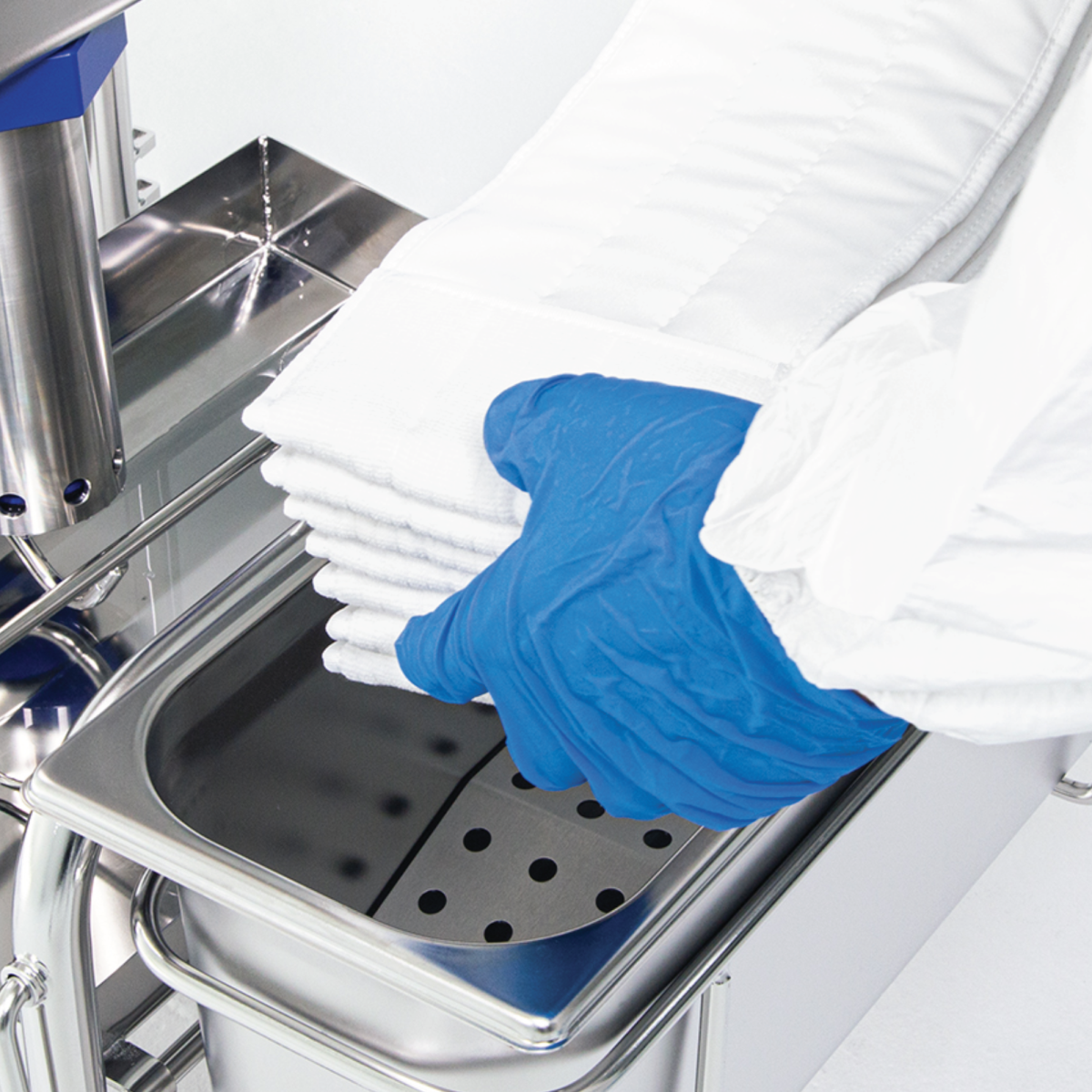When it comes to operations, improvements to safety often come with an increase in costs. In fact, cleaning procedures for cleanrooms and critical environments are typically chosen for a balance between the two—meeting the necessary regulatory, industry, and GMP standards at the lowest cost of labor and materials.
However, this relationship is based on old cleaning tools and techniques. With two- and three-bucket mopping systems and their correlating mop and wipe substrates, risk reduction requires a greater investment: more stringent and therefore time-consuming SOPs, more frequent cleaning chemical changes, and the use of mops and wipes recommended for higher-level environments.
A newly designed cleaning system and enhanced substrates change the relationship between safety and cost—greatly reducing risk and lowering cost through process and consumables efficiency.
The Risks of Conventional Mopping Systems
Traditional two- and three-bucket mopping systems have high touchpoints throughout the process that could potentially introduce both contamination and employee health risks.
• Exposed cleaning chemicals
• Attaching clean mops
• Rinsing mops
• Wringing mops
• Mopping surfaces
• Removing dirty mops
• Disposing solution
• Cleaning equipment
A Risk Assessment of Those High Touch Points Is as Follows:

Mopping with dirty mops, mopping with contaminated solution, and touching dirty mops present the most severe risks in terms of harm.
Chemical Usage of Conventional Mopping Systems
Based on best practice recommendations, you have to change 2-3 gallons of chemical every 1,000 square feet for an ISO 7 or 8 environment. For an ISO 5 or 6 facility, the chemical change is recommended to be more often–2-3 gallons every 600 square feet. The chart below depicts the daily cleaning chemical consumption for a 5,000 square foot facility.

Significant consumables waste with conventional mopping systems results from frequent cleaning chemical changes.
Saturix Mopping System Lowers Mopping Process Risk Profile by 80% & Chemical Usage by 90%1
This innovative system completely eliminates high-risk touchpoints and chemical waste associated with conventional mop systems.
 | Hands-Free Mop Attachment
Clean mops attach without the assistance of hands, quick and easy. |
 | Sealed Liquid Reservoir—No Changing Cleaning Chemicals The cleaning solution is isolated in a sealed container, eliminating spills and keeping it viable for up to eight days. |
 | Single Mop Precision Dosing—No Mop Rinsing or Wringing Clean mops are used to press a lever that releases the exact amount of cleaning solution per mop into a separate tray. |
 | Always Mop with Clean Mops and Clean Solution This eliminates the particle and residual contamination that is a part of all conventional mopping systems. |

| Hands-Free Mop Disposal Mops are dropped directly in a waste receptacle, without the assistance of hands—the frame is then ready for a clean mop. |
99.9% Particle Removal—Additional Insurance to Safeguard Any Environment
While the Saturix cleaning system provides a dynamic reduction to risk and chemical consumption, Saturix microfiber mops and wipes remove 99.9% of particles down to .1 micron in size.2 This provides an additional layer of protection and efficiency, removing a wide range of particles.

